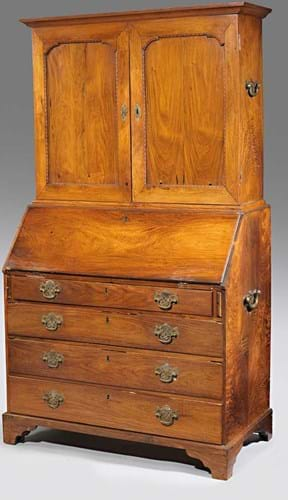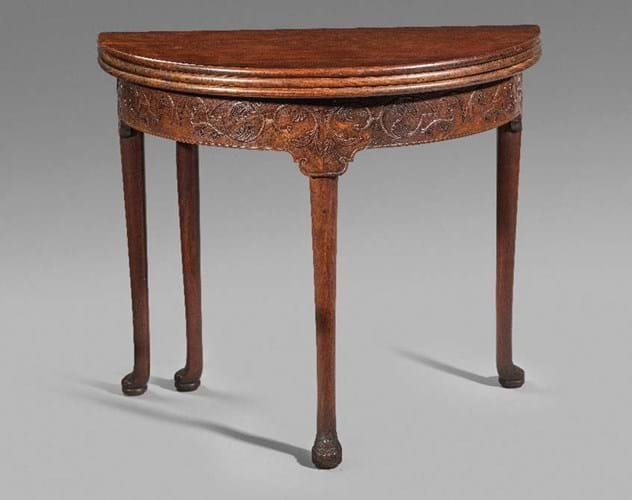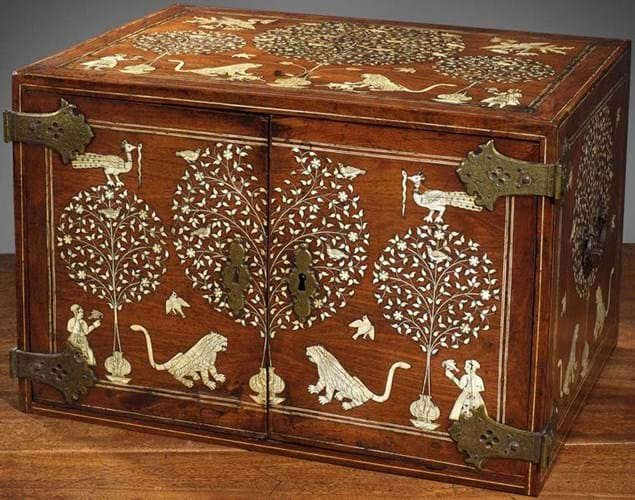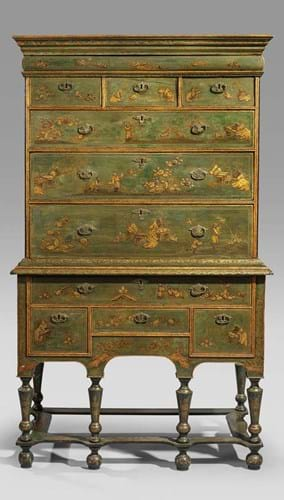The challenge of assembling a furniture and works of art sale that the market embraces – aggravated by the Covid crisis – was met by Woolley & Wallis (25% buyer’s premium) on September 22 with consignments from a London townhouse and a Cornish country estate.
From closer to home came an Anglo-Chinese huanghuali bureau cabinet which head of valuations Jeremy Lamond spotted when perusing the contents of a house less than 500 yards from the Salisbury salerooms on Castle Street.
The vendor’s forbear, a diplomat working in the Far East, had acquired it about a century ago in Malacca where he was Resident Councillor.
Probably made for an East India Company official c.1760, the form is based on an English prototype but constructed in an entirely Chinese way, including using solid timbers rather than veneers.
These pieces are a much easier sell than ‘pure’ English mahogany furniture of the same period.
A pair of similar cabinets had made £90,000 in January last year. This comparable single example was estimated at a tempting £8000- 12,000 and sold to a Canadian buyer at £26,000.
Huanghuali was a timber favoured by the elite of Ming and Qing China, and it remains much admired today.
This sale included two other Anglo-Chinese pieces in this Asian rosewood that appeal for their blending of Eastern and Western ideas.
A c.1740 combined games and tea table of demi-lune form with a triple fold-over was carved with dragon masks and ruyi to the frieze. It quadrupled the top estimate selling to the UK trade at £24,000.
A late 18th or early 19th century pedestal desk, 2ft 7in tall by 4ft wide (78cm x 1.22m) with an arrangement of seven camphor wood-lined drawers, pitched at £3000-5000 went to a UK private buyer at £14,000.
Indo-Portuguese popularity
It was not just British traders, of course, who bought treasures from the East. The immediately recognisable craftsmanship now known as Indo-Portuguese is equally popular for its sense of exoticism and cross-culture references.
A rosewood and ivory inlaid table cabinet with iron carrying handles was made in Gujarat or Sindh in the early 17th century although it had some later amendments.
Worked with the depictions of the birds, beasts and blossoms of India and two falconers, inside two doors is an arrangement of seven drawers.
Pitched at £8000-12,000, the cabinet sold to a UK collector at £17,000 via thesaleroom.com.
Topping the 620-lot sale, which enjoyed an 83% selling rate at a £611,300 total, was an English work. It was among the large consignment of furniture from a London townhouse, bought during the 1980s-90s from a roll-call of leading London dealers.
The pick was a rare c.1690-1700 green japanned chest-on-stand bought from Alistair Sampson in 1983 at the Grosvenor House Fair.
The 5ft 11in (1.80m) high tallboy decorated with raised gilt with figures, birds, buildings and flowers to the front and cranes to the sides, was estimated at £8000-12,000 and sold to another of the strong contingent of British private buyers at £31,000.
Also a Grosvenor House exhibit, a satinwood and purpleheart semi-elliptical commode described as ‘in the manner of Gillows, c.1790 and later’ was acquired from Apter-Fredericks in 1986. Painted to the doors with oval panels of swags and ribbon-tied wreaths, it sold to the London trade within estimate at £22,000.
Bought in 1985 from Jeremy Ltd on the King’s Road, a c.1765 giltwood wall mirror quadrupled the mid-estimate at Salisbury.
The later oval plate was in a regilded 3ft 11in x 2ft 5in (1.20m x 73cm) frame carved with leaf, branch, C-scroll and rocaille flanked by a pair of ho-ho birds. It was a private buy at £17,000.
City ticker
Best of the clocks was a William and Mary ebony bracket clock inscribed to the backplate and dial Charles Halsted London (fl.1656-1705).
A good city maker, this example of his craft had pull-repeat striking the quarters on three bells and the hours on another. Against a conservative £1500- 2000 estimate, it was a private UK buy at £11,500.
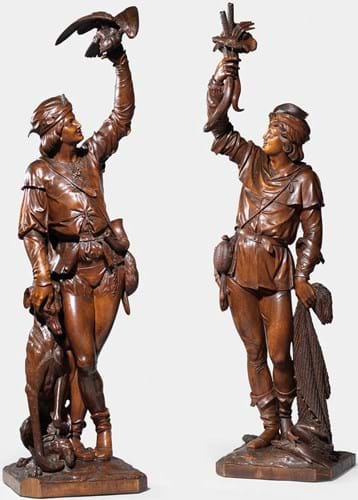
Pair of Italian carved walnut figures with a Stokesley Court provenance – £20,000 at Woolley & Wallis.
An impressive pair of Italian carved walnut figures of young sportsmen had been bought by the vendor at Sotheby’s Stokesley Court sale in 1994.
Standing about 4ft 10in (1.48m) tall, these Renaissance revival studies of an angler and falconer were dated c.1880 and attributed to Valentino Panciera Besarel (1829-1902).
The pair doubled the mid-estimate at Salisbury, selling to a UK buyer at £20,000 via thesaleroom.com.


